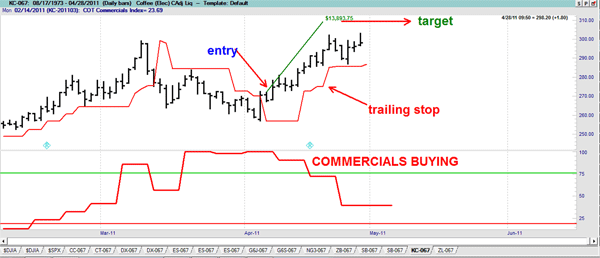My Trading strategy…how it works
Without a documented trading strategy you are always chasing your tail…in repetitive circles like 90% of traders. They are lost because they do not have a plan. My students don’t do that because we have an absolute strategy. Here it is…
Today’s lesson is very simple but critically important. When I meet with traders and ask them what their strategy is they are usually clueless. Their strategy, they tell me, is to buy low and sell high. But they have no approach or strategic way of accomplishing that. They’re just looking to buy without understanding the markets on a broader basis…in short, they are trading on a wing and a prayer.
Our trading strategy is quite simple to enunciate:
A) first of all we look for a set up market
B) then we look for entry into that market
C) finally, we look for an exit which could be
a) a stop loss
b) a trailing stop
c) a price target
Consider this your road map to trading as we have defined our parameters.
SET UP MARKET
ENTRIES
Of course, it is not enough to have a market is just set up. We still have to know when to get in. In my course I teach five different entry techniques. In an upcoming lesson in this series I’m going to show you one of my mechanical entry strategies, you will definitely want to stay tuned for that.
The problem most traders have is that they are simply one trick ponies. They have one, and only one, entry technique. In actuality, markets top and bottom (trend reverse) in a wide variety of ways. That’s why I teach more than one entry strategy. If the market bottomed, or topped, the same way every time this would be an easy business. Tops and bottoms do have some things in common, but they are not all the same. So we need several approaches to catch the turns.
EXITS
The fun begins once we are in a trade! Eventually one of two things will happen, we will have a loss or we will take a profit. That sounds simple, but trust me it isn’t. I will show you one of my exit techniques in this series of free lessons as well. For now let’s just think of strategy and ways we might get out the trade.
To begin with, once I’m in a trade I place a stop loss to limit my losses. Let’s say I’m buying. So my stop loss is below the market, not too far away… I don’t want to have a massive loss, but not so close that there’s a high chance of the market randomly stopping me out. I think there is a precise point where stops should be, another thing I teach in my courses.
By placing that protective stop loss, I have my losses covered. I can only lose so much. The complexity begins when the market starts rally and I’m wondering…where should I get out?
My strategy is to have a trailing stop somewhere below the market to allow the market to run, hopefully a long way. As you’ve already learned, I want to have small positions and catch big moves. The best way to catch a big move is to give the market room to trade back and forth. What is needed here is something that says if the market has pulled back too much, I better get out; the trend is probably over. I should take profits.
My last exit technique is to sell at a predetermined target. I don’t determine my targets like other people; most of them just take a certain percentage of daily range or look at Fibonacci Numbers. These are things I have studied…but…did not find of great value. I use my "Target Shooter" for taking profits (a tool I have been using since 1966). It has a wonderful record of getting me out very close to market highs and lows. It isn’t perfect, but it has done a wonderful job of getting out before markets reverse. It is based on recent price swings to suggest where prices most likely will go; I exit at that price.
The chart below shows a very clear example of a trade we our followers received in April 2011. As you can see this market was set up to rally because the Commercials had been buying. The entry came from a variety of techniques, but you can see that one entry could have been when the red line was penetrated. The stop was placed below the low of that upside day and then I started to move the stop up with price, exactly where you see the red line, which is my trailing stop.
The target, see the green indicator, was where profits would be taken if we rallied there prior to falling below the trailing stop.
What you should note is that
- we have our entry
- then protective stop loss
- trailing stop
- and target
All of those techniques are mechanical…you can see them right on the chart. There is no judgment as to where they are. Any two Larry Williams students will come up with the exact same price points.

So here’s my strategy; I find a market that is set up. I then look for a change in trend at which point I get into the position. I then place my stop loss for protection and begin using a trailing stop underneath the market while hoping price goes to the target.
This means I know… every single second I am in the trade… what to do. There is no confusion. I have my stop loss. I have my trailing stop. I have my target. I knew where to get in. I maybe wrong (that does happen) but I know exactly what I am doing… I am never trading blind. None of my students trade blindly.
You shouldn’t be either.
Larry
